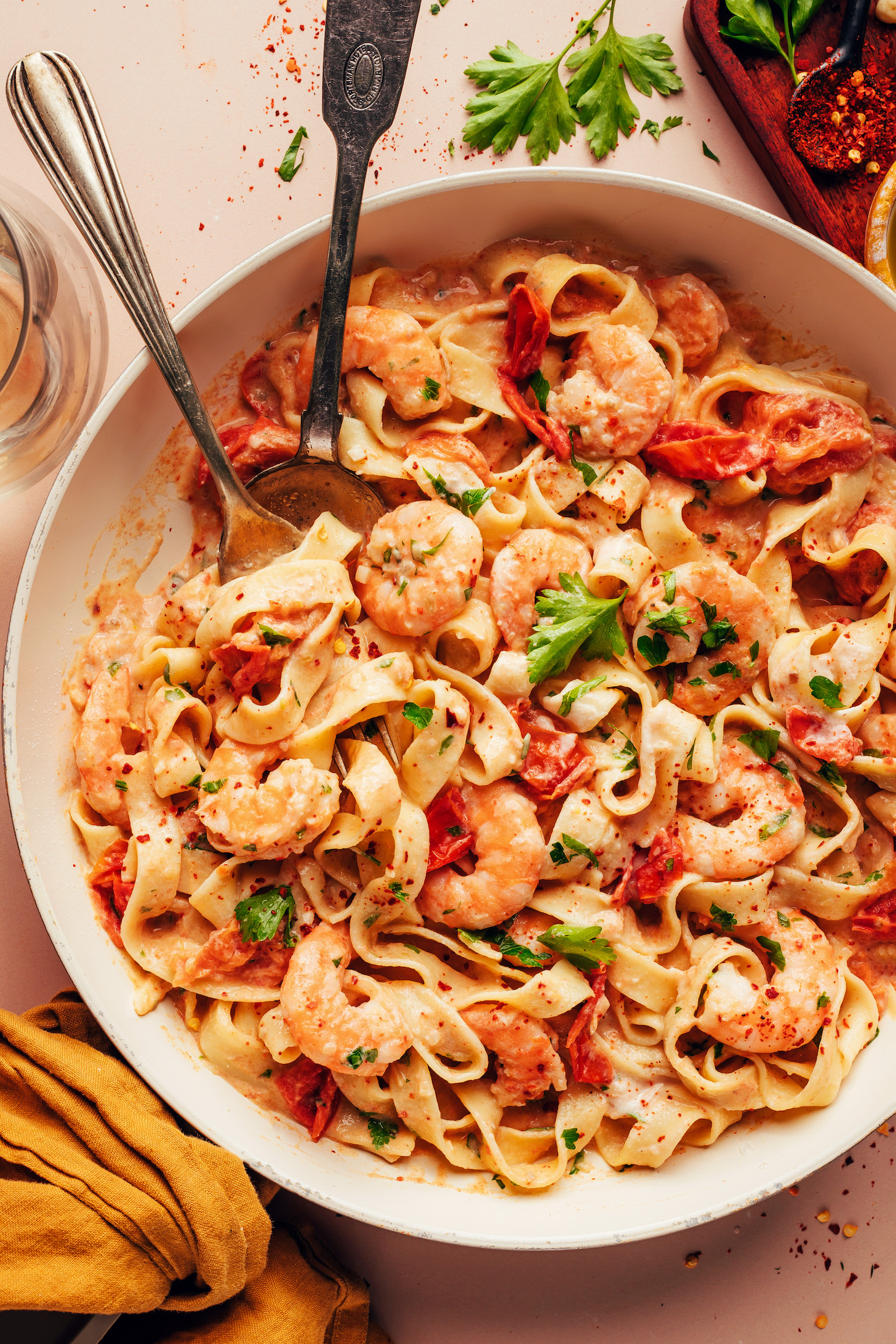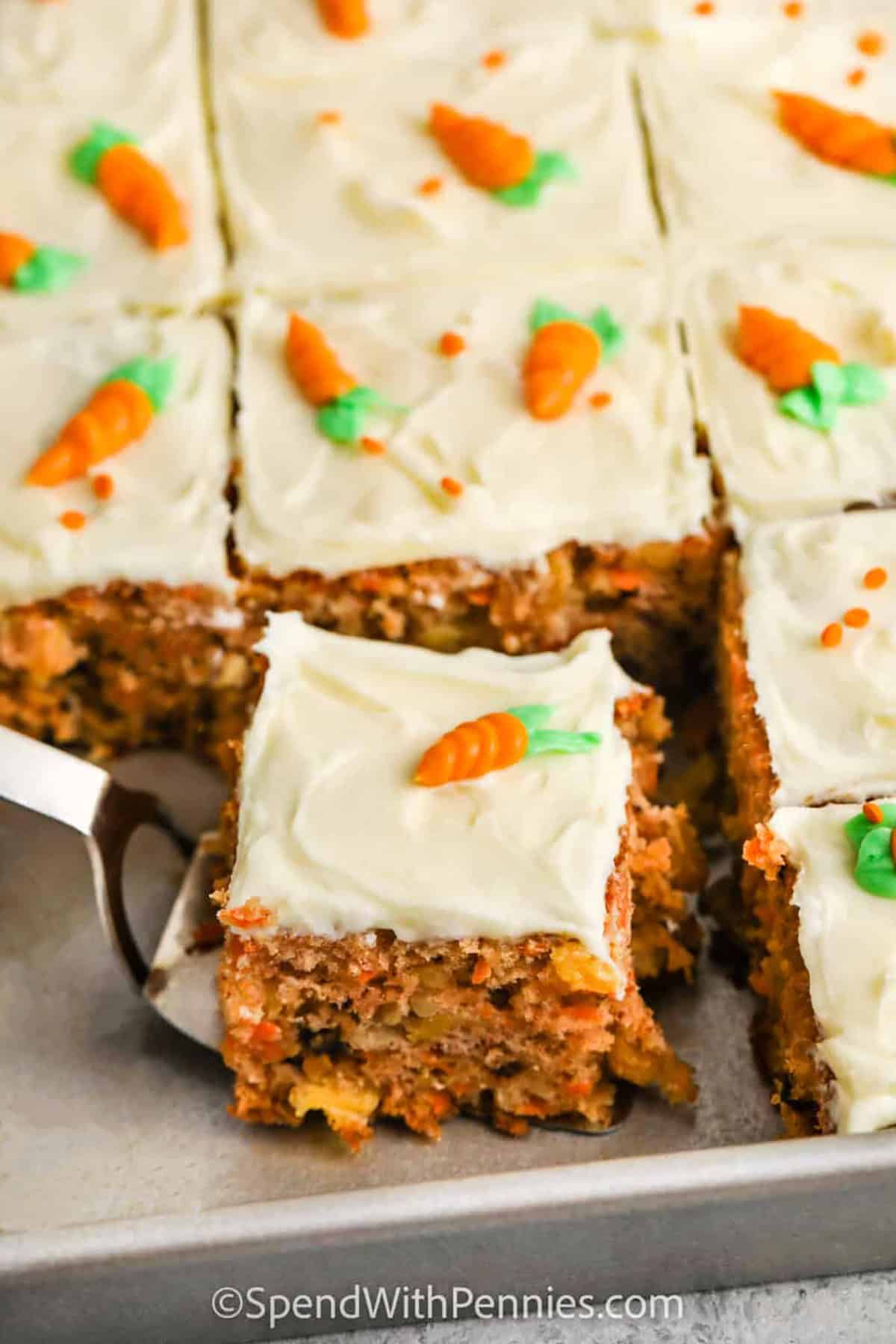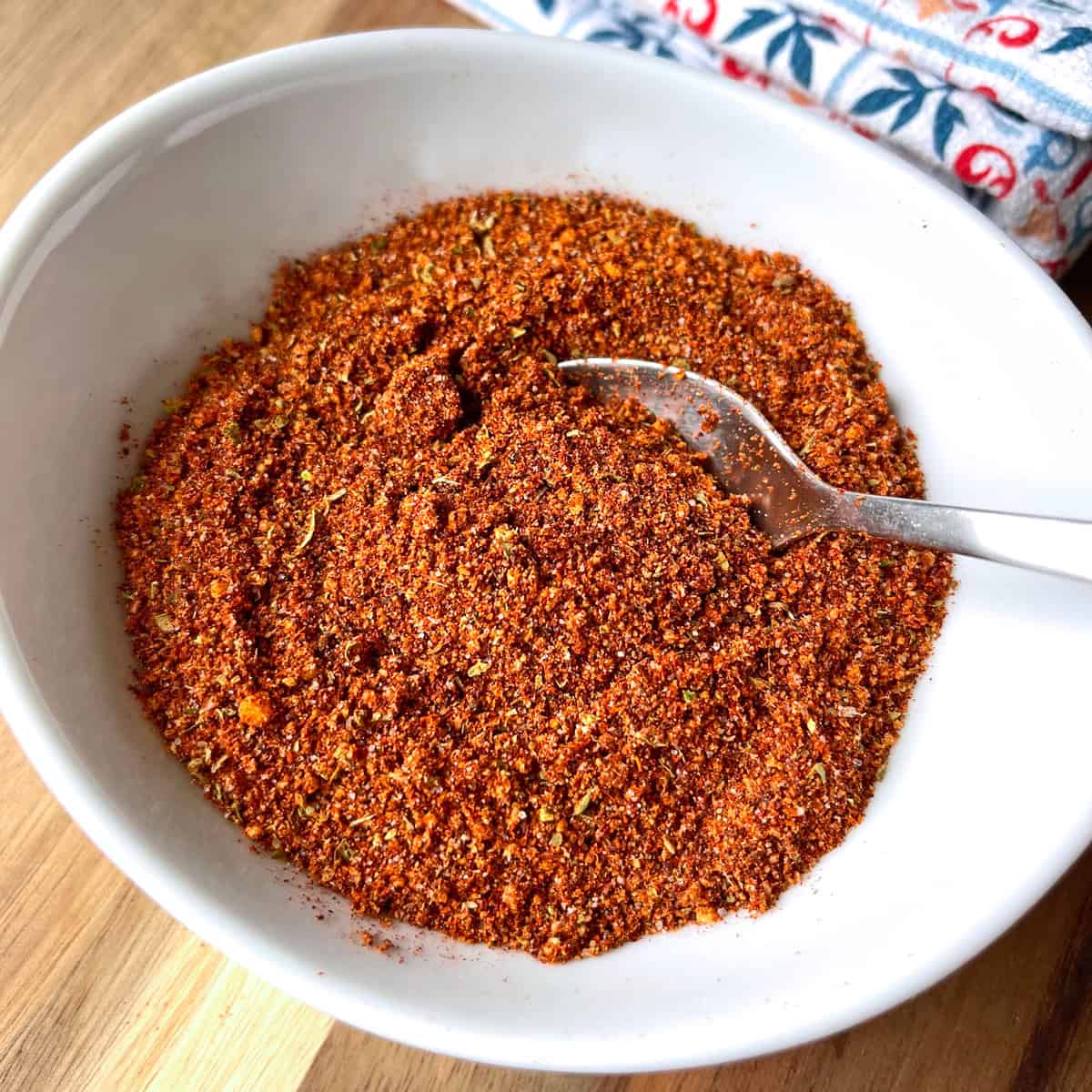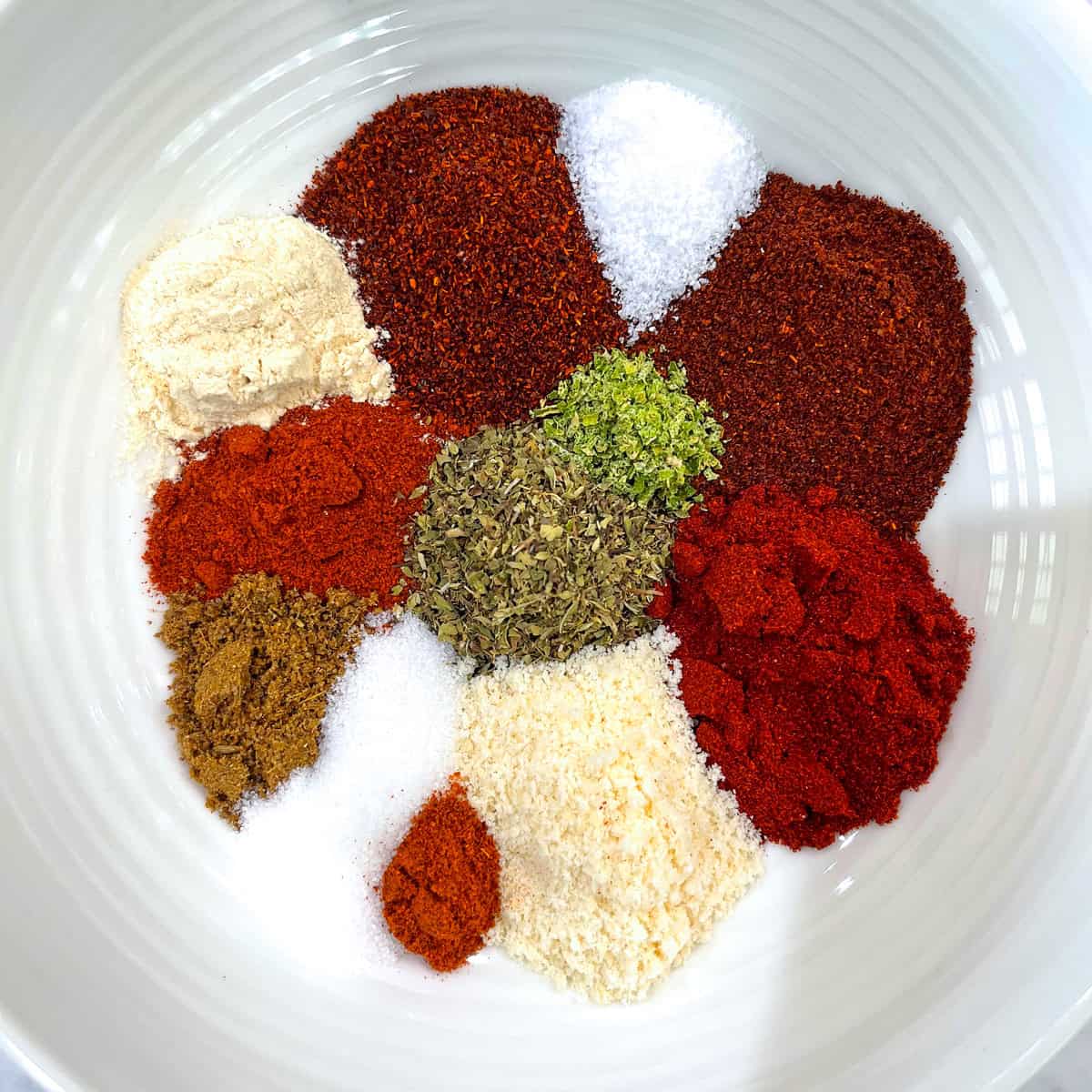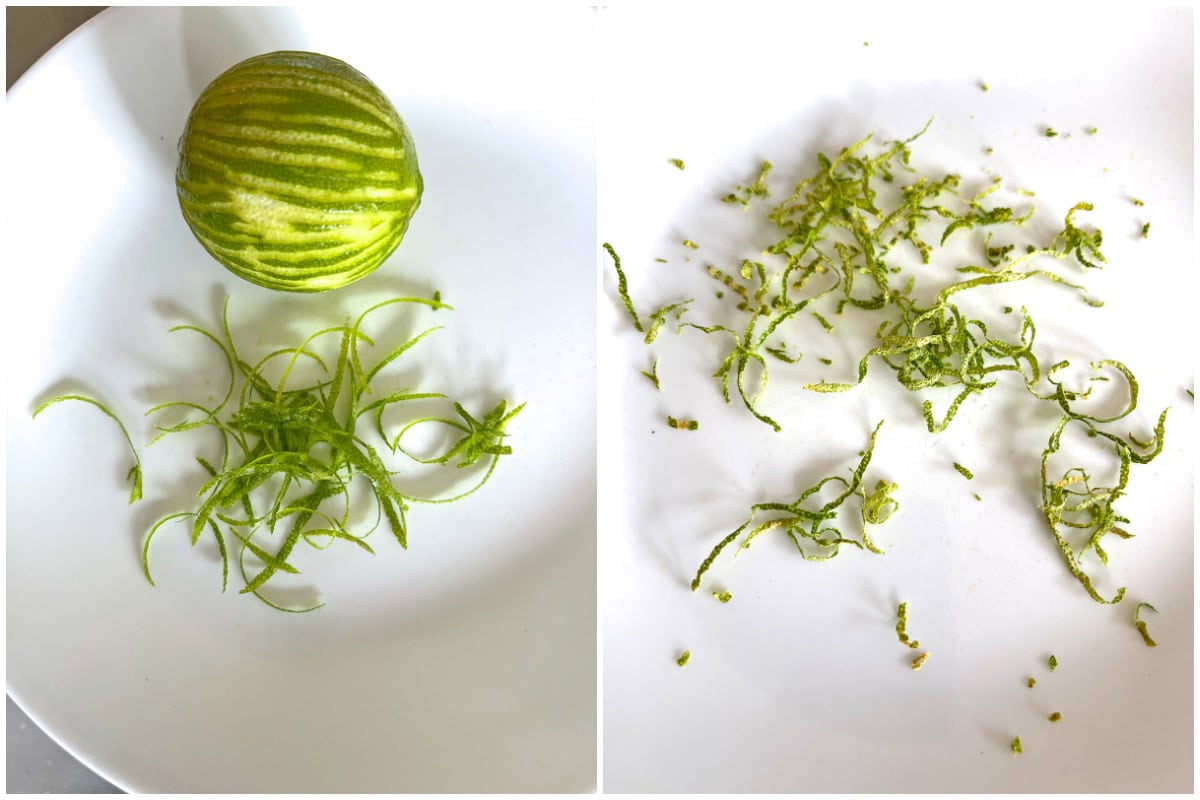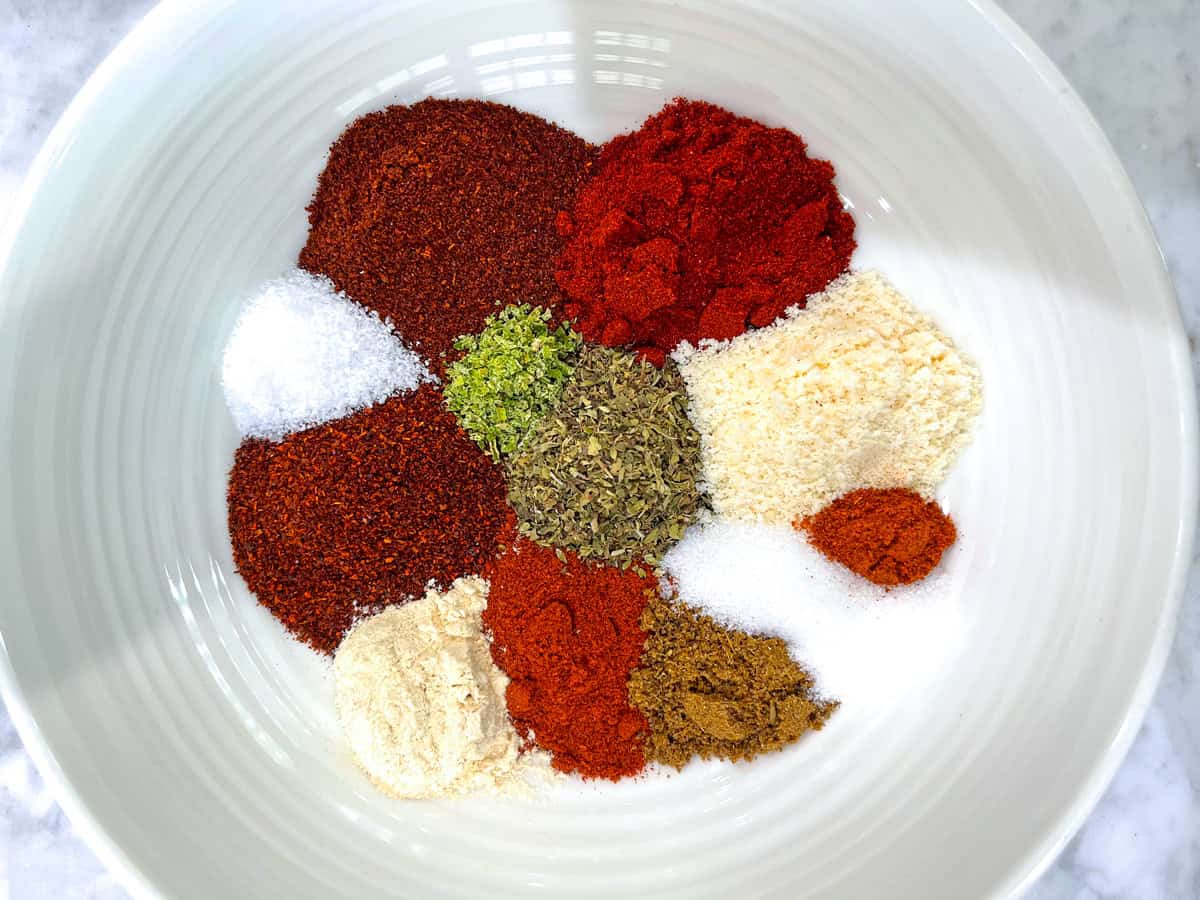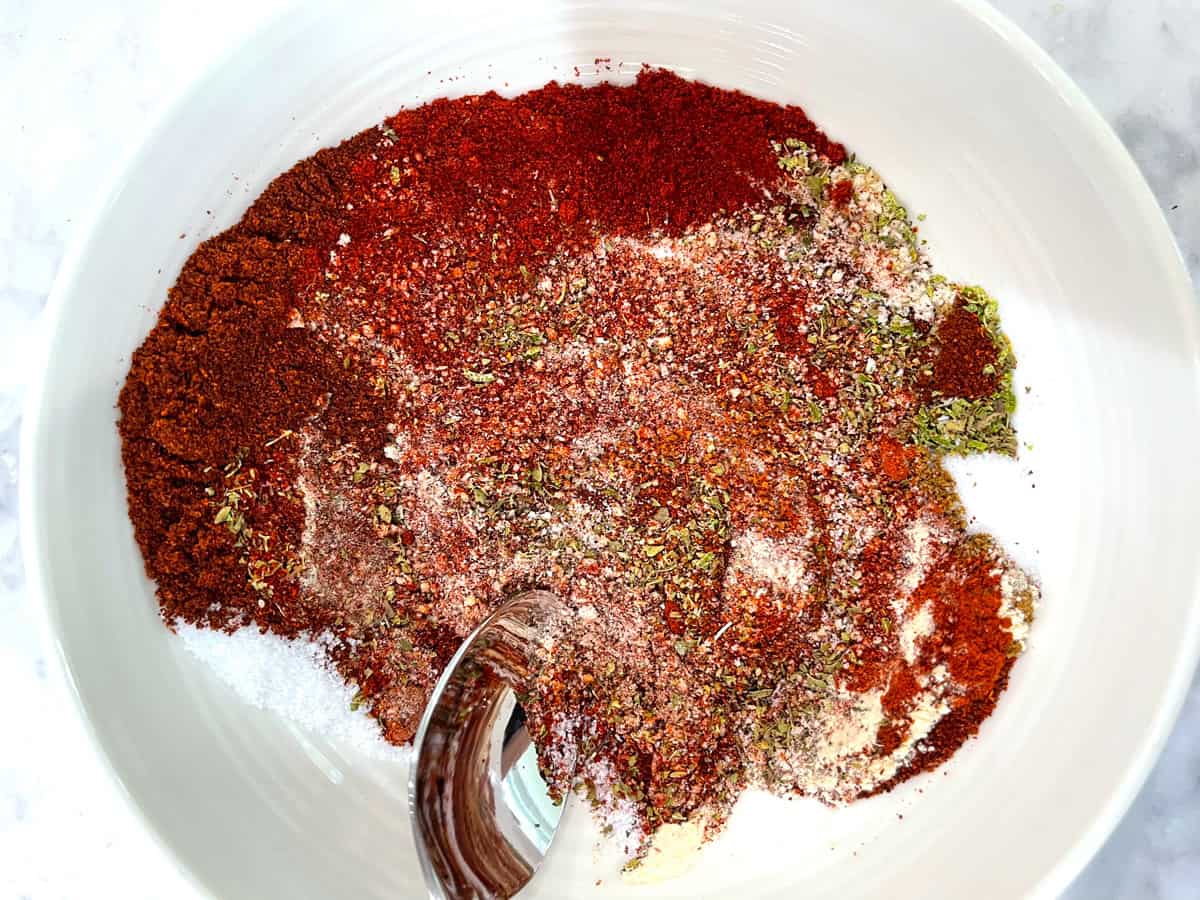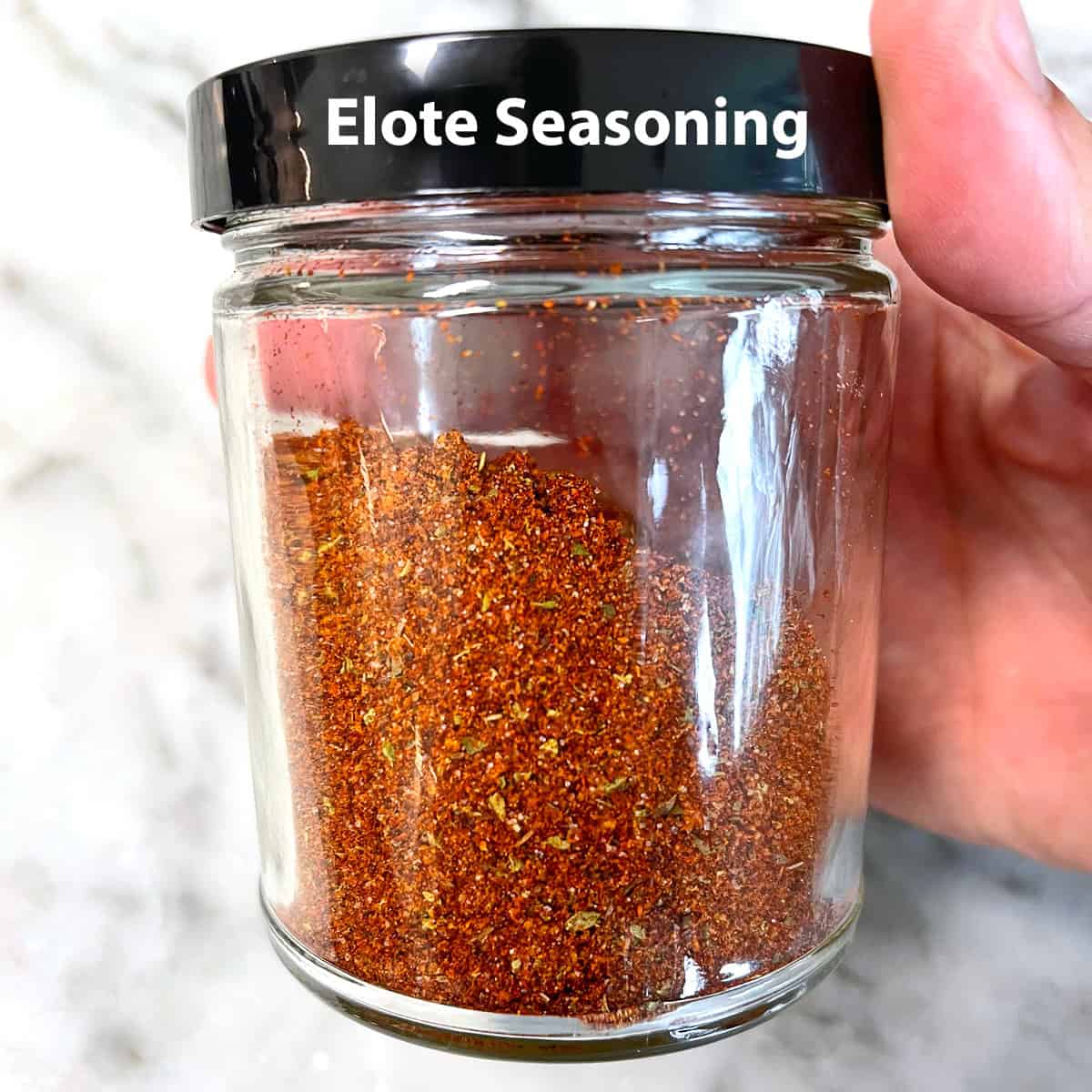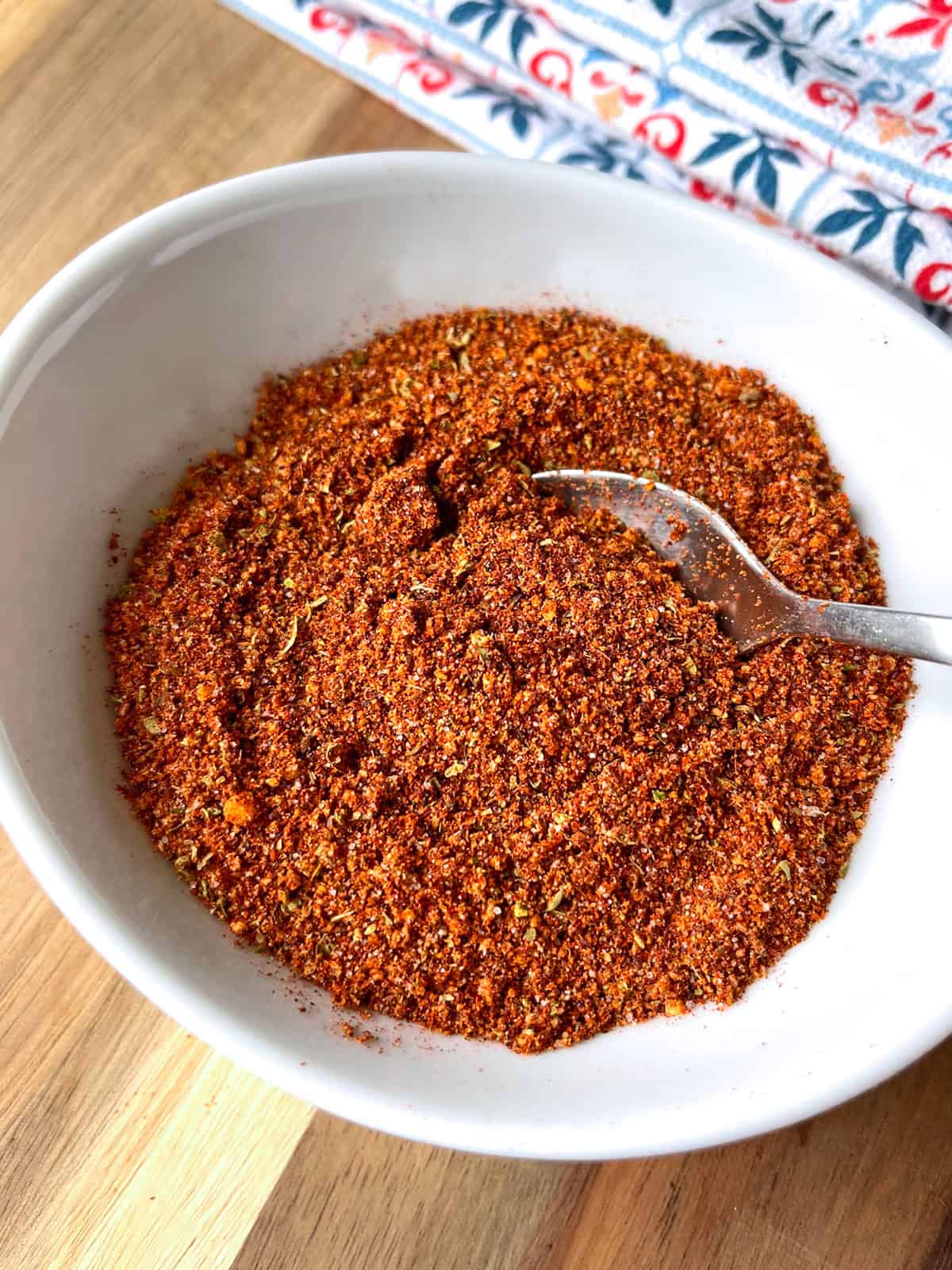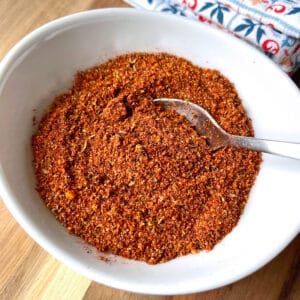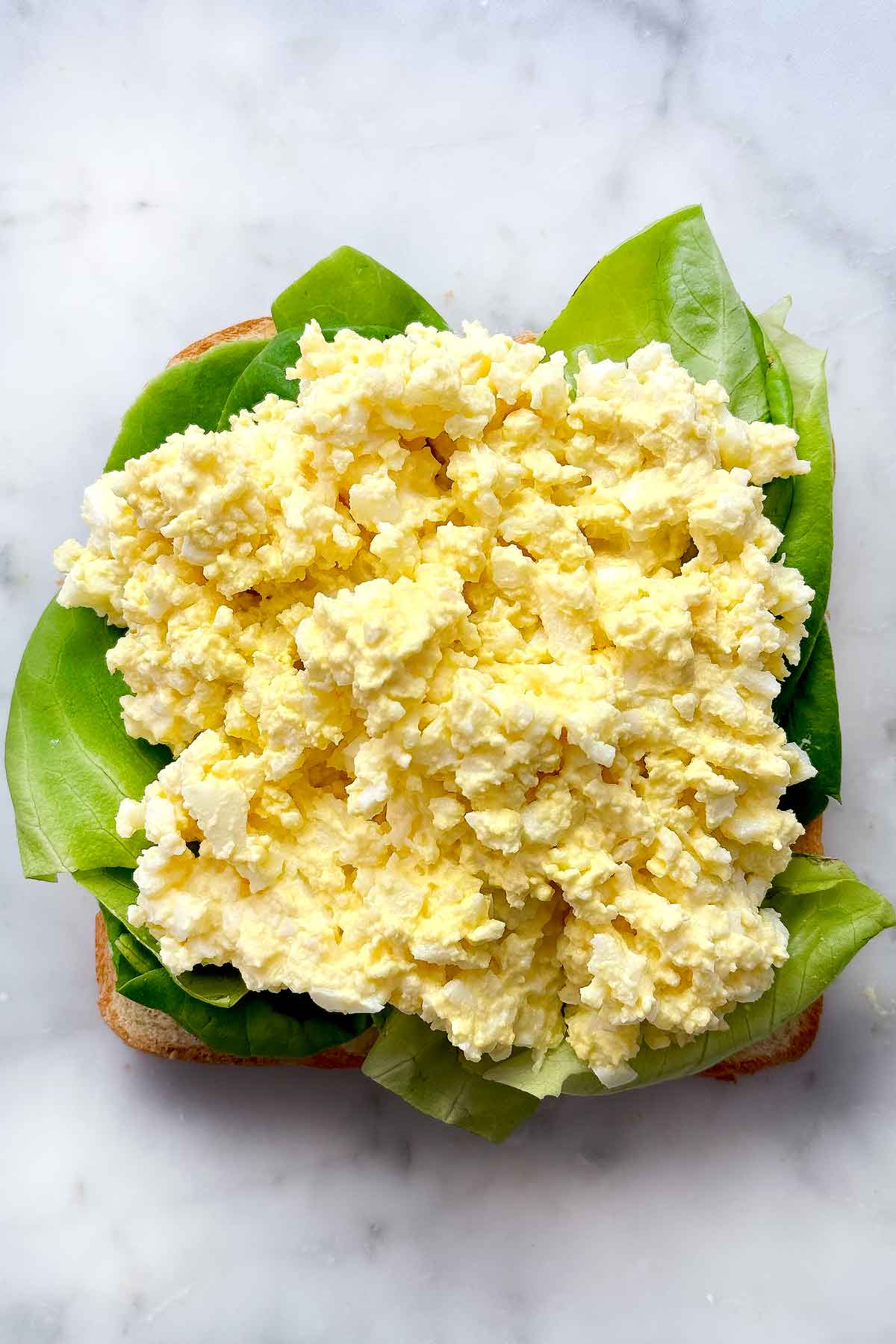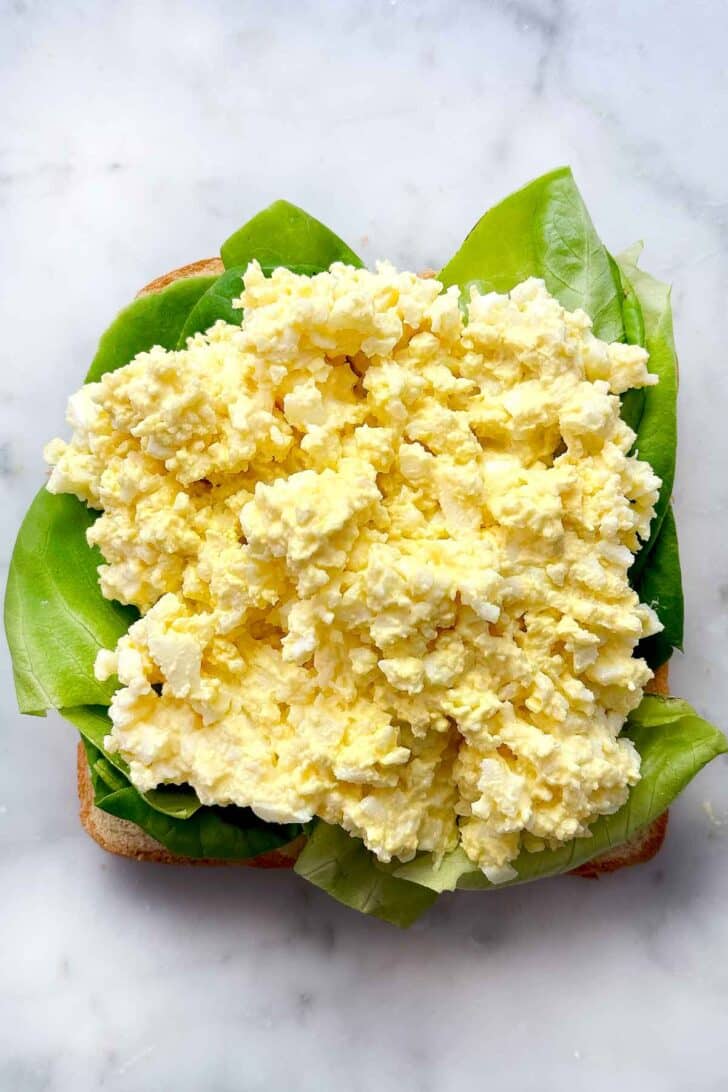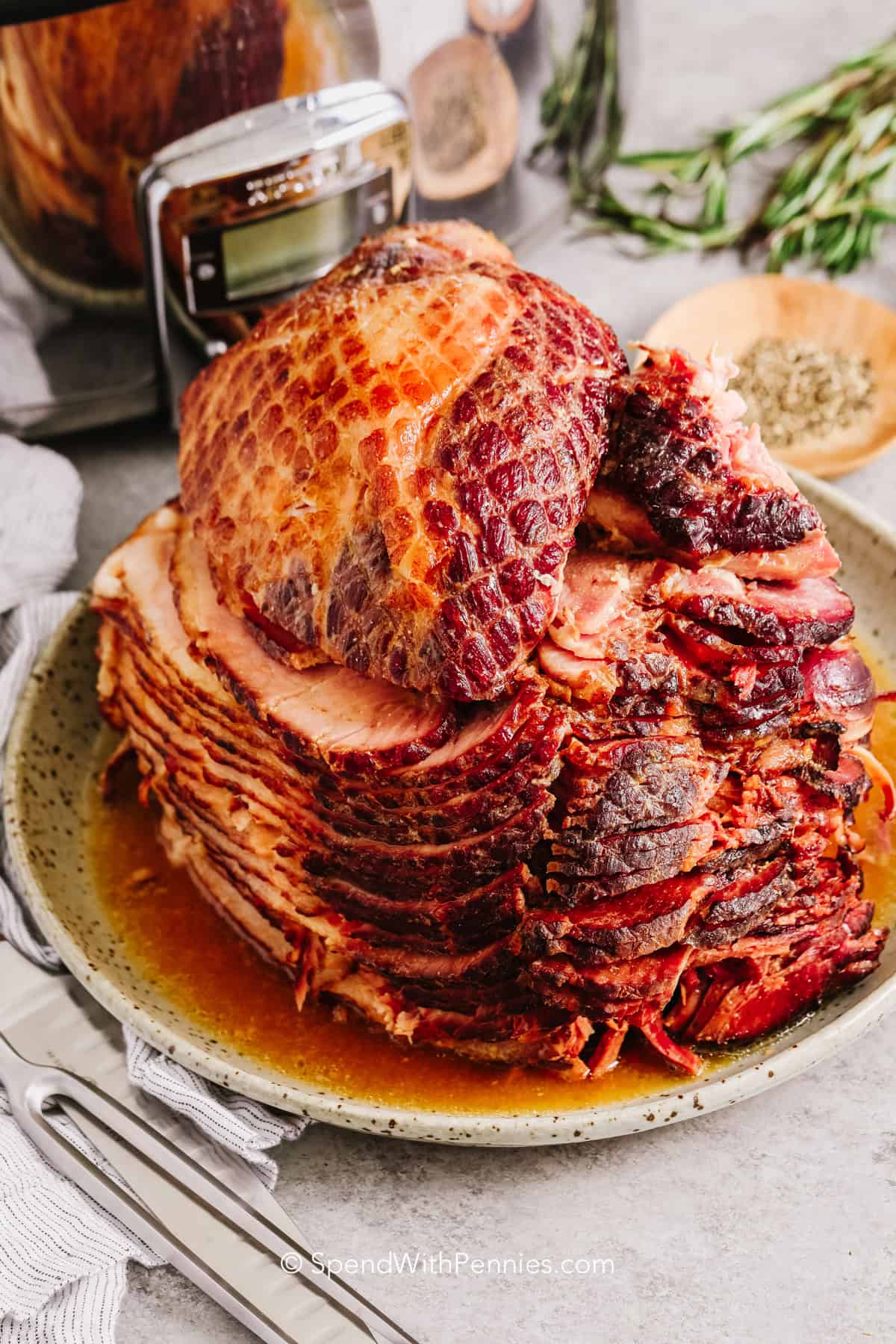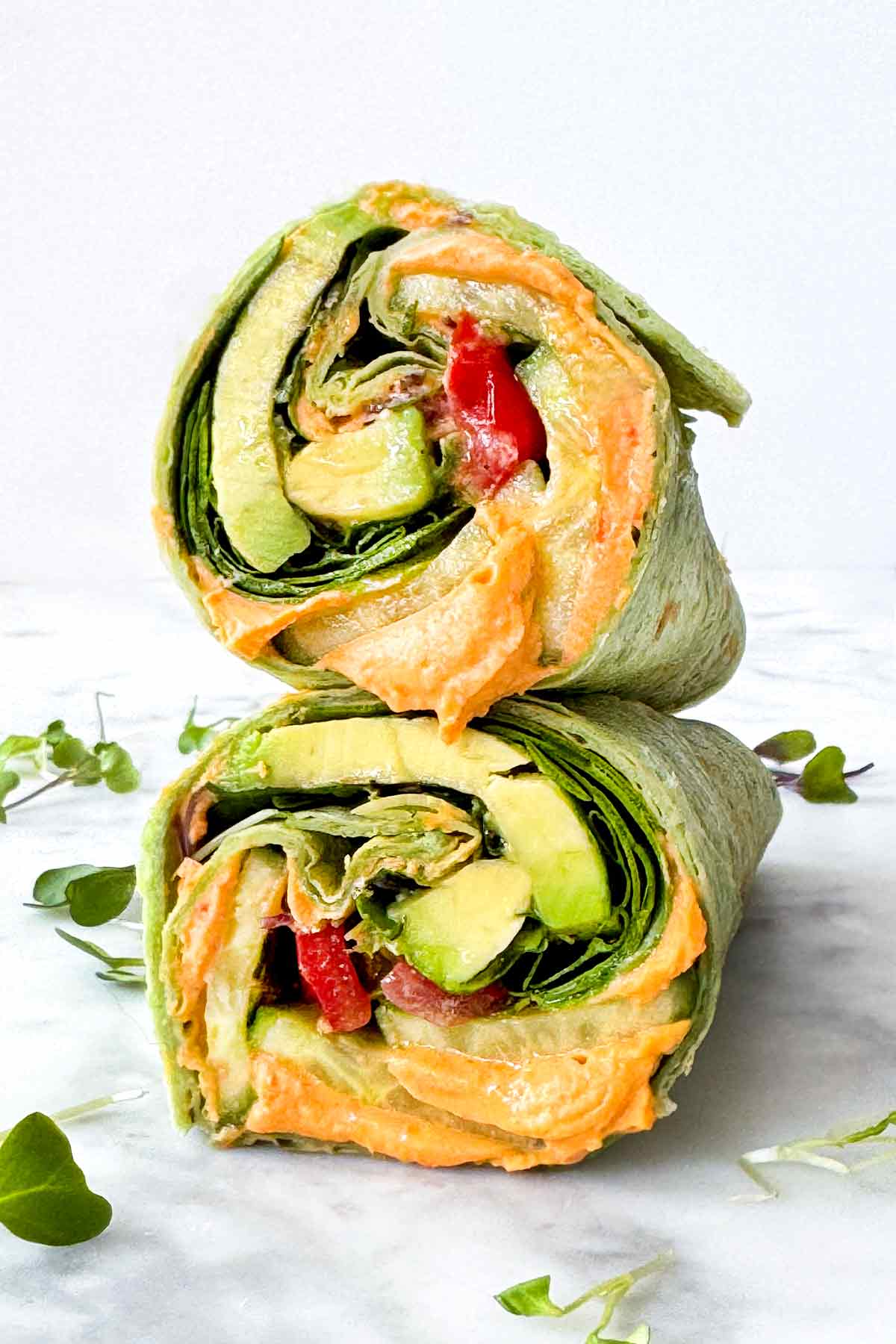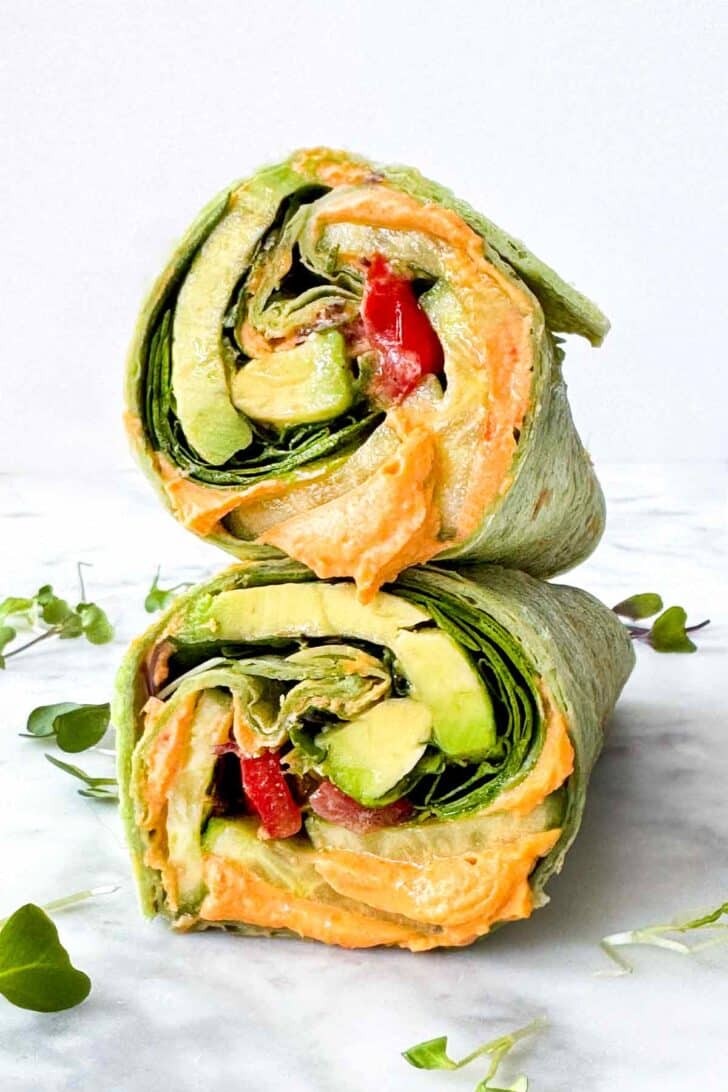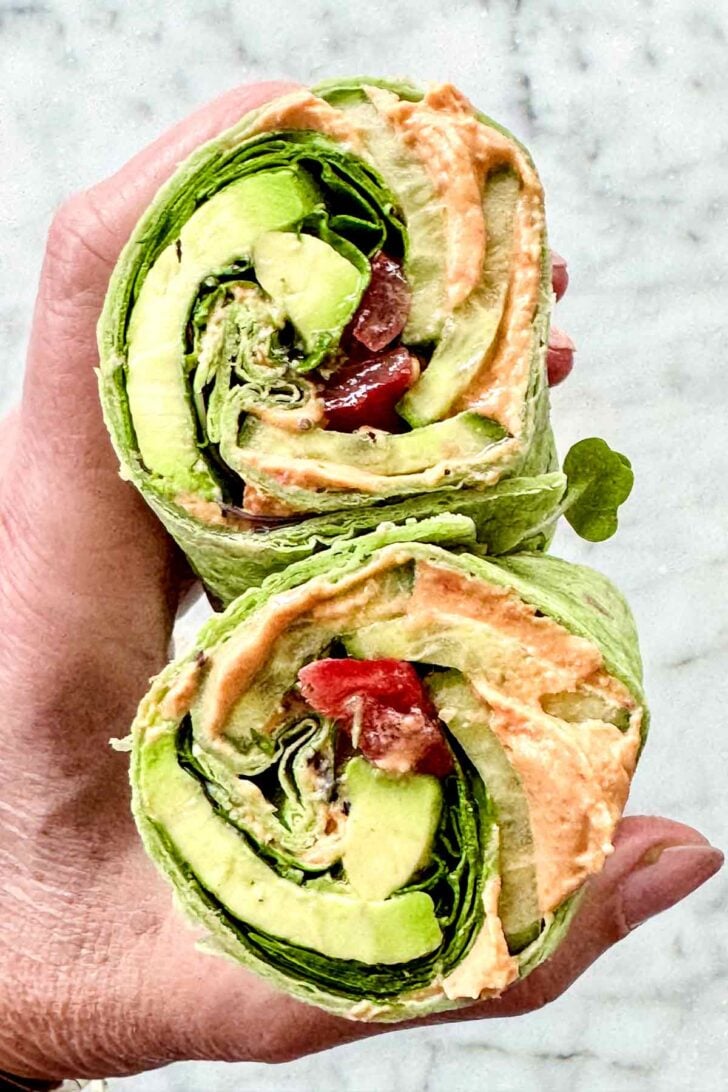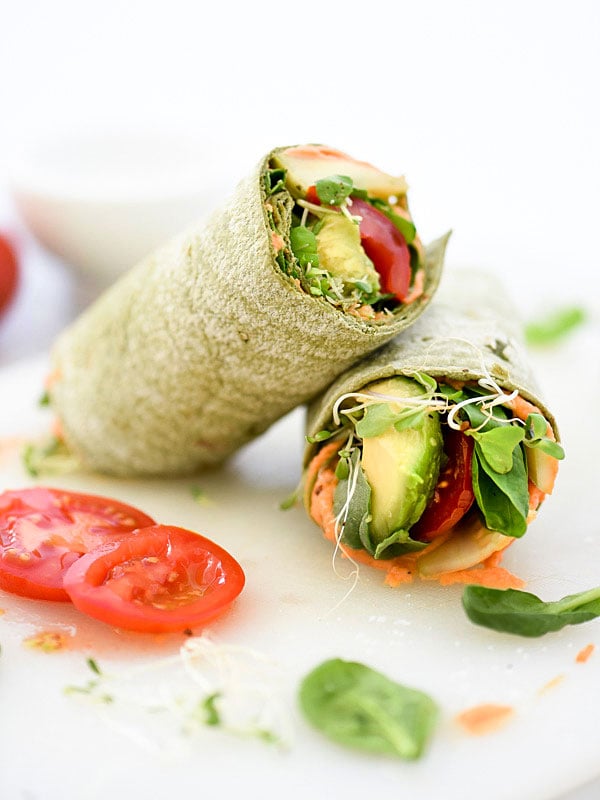
Weekend flavor meets weeknight ease: 30-minute Tuscan-style shrimp pasta! This CREAMY, dairy-free dish is rich, garlicky, and bursting with bright tomato flavor.
It’s impressive enough to wow any guests but simple enough that you’ll want to make it again and again! Let us show you how it’s done!
How to Make Dairy-Free Shrimp Pasta
This EASY shrimp pasta starts with cooking your favorite pasta (we like gluten-free fettuccine) and soaking some cashews for dairy-free creaminess.

Next come the perfectly cooked shrimp! The trick is to sauté shallots, garlic, and red pepper flakes for flavor, then add raw shrimp and cook until pink and slightly curled up. The timing will depend on the size of the shrimp and other factors, but we find 2 minutes per side is usually the magic number for shrimp that’s tender, fully cooked, and not rubbery.

Then it’s on to the bright, creamy tomato sauce! Inspired by our fan-favorite Creamy Italian White Bean Skillet Meal, cherry tomatoes cook with white wine, red pepper flakes, and salt until the tomatoes are soft and burst open.

Then we add homemade cashew cream and the sauce becomes creamy and develops a thick, luxurious texture!

Lastly, add in your cooked pasta, garnish with fresh parsley or basil, and dinner is served!

We can’t wait for you to try this shrimp pasta! It’s:
Creamy
Bright
Saucy
Rich
Flavorful
Comforting
& Easy to make!
This dish is satisfying on its own or paired with sautéed greens, roasted broccoli, green salad, or garlic bread.
More Dairy-Free Pasta Recipes
If you try this recipe, let us know! Leave a comment, rate it, and don’t forget to tag a photo @minimalistbaker on Instagram. Cheers, friends!

Servings 4 Servings
Prevent your screen from going dark
CASHEW CREAM
- 1/2 cup raw cashews, soaked
- 1 ¼ cup water (plus more for soaking cashews)
PASTA
- 1 (8 oz.) box fettuccine or spaghetti (we like Jovial fettuccine // ensure gluten-free as needed)
- 1 lb raw shrimp*, peeled and deveined with tails removed (thaw and pat dry if frozen*)
- 2 Tbsp olive oil
- 2 medium shallots, minced (2 shallots yield ~80 g or 1/2 cup)
- 6-8 medium cloves garlic, minced (6-8 cloves garlic yield ~1/4 cup or 50 g)
- 3/4-1 tsp red pepper flakes
- 5 cups cherry tomatoes, left whole
- 3/4 cup dry white wine (we like a lighter white like Sauvignon Blanc // or sub water)
- 3/4-1 tsp sea salt (plus more to taste)
- 1/2 cup chopped fresh parsley (or basil)
-
Add cashews to a heatproof bowl and cover with hot water by at least 1-2 inches. Let them soak while you get started on everything else. Soaking makes the cashew cream neutral-flavored and extra creamy, but (in a pinch) you can skip this step if using a powerful blender such as a NutriBullet or Vitamix.
-
Bring a large pot of water to a boil. Once boiling, add your pasta and cook according to the package directions.
-
If using frozen shrimp, see notes for defrosting instructions.
-
Meanwhile, heat a large skillet over medium heat. Once hot, add olive oil, shallots, and garlic and cook for 3-4 minutes until softened. Add the red pepper flakes and cook until fragrant (~1 minute). Add the shrimp and cook for 1-3 minutes on each side — until they turn pink and curl up (2 minutes per side is usually perfect!). They will cook quickly and cook time will depend on how hot your pan is. We like to let them curl up completely on the first side, then flip and cook until the underside is pink. To avoid under cooking, you want them to have a vibrant pink color (not translucent) and feel firm when pierced with a fork, but avoid overcooking or they will get rubbery! Remove the shrimp from the pan, place them on a plate, and set aside.
-
Add the cherry tomatoes, white wine, and salt to the same (relatively empty) pan (it’s okay if the sautéed shallots and garlic remain). Cover and cook on medium-high heat for 5-10 minutes or until the tomatoes have burst.
-
Meanwhile, make the cashew cream. Drain the cashews and add them to a high-speed blender with the water. Blend on high until smooth and creamy.
-
Remove the lid from the tomatoes and use the back of your spoon or spatula to further break them down. Turn the heat to medium-low and stir in the cashew cream. Let the sauce cook down for about 2 more minutes. Taste and adjust flavor as needed, adding more salt for overall flavor or red pepper flakes for heat. Add the shrimp back into the mixture and stir to coat. Turn off the heat and stir in the chopped parsley (or basil) and cooked pasta (keep separate if preparing in advance).
-
Serve immediately garnished with dairy-free parmesan cheese, red pepper flakes, or extra parsley and/or basil (all optional). Best served fresh but can be stored in an airtight container in the refrigerator for up to 2-3 days. Not freezer friendly.
*To quickly defrost frozen shrimp, place in a colander and run cold water over it for ~3 minutes, until no longer frozen. If it’s not defrosted (soft) after 3 minutes, allow to soak in cold water for up to 20-30 minutes, checking it and replacing the water after 5-10 minutes. Once thawed, drain and pat dry with a paper towel.
*This dish pairs well with roasted broccoli, red bell pepper, and onion. To prepare the veggies, cut 1 head of broccoli into florets, 1/2 red bell pepper into 2-inch pieces, and 1/4 onion into 1/2-inch slices. Add to a parchment-lined baking sheet and toss with 1 Tbsp olive oil. Sprinkle generously with garlic powder, salt, and black pepper. Bake at 400 F (204 C) for ~15 minutes, until the veggies are tender and browned on the edges.
*Inspired by our Creamy Italian White Bean Skillet Meal.
*Nutrition information is a rough estimate calculated with Jovial brown rice fettuccine, the lesser amount of red pepper flakes, and without optional ingredients.
Serving: 1 serving Calories: 535 Carbohydrates: 62.9 g Protein: 29.7 g Fat: 16.4 g Saturated Fat: 2.3 g Polyunsaturated Fat: 2.2 g Monounsaturated Fat: 8.9 g Trans Fat: 0 g Cholesterol: 175 mg Sodium: 1148 mg Potassium: 1024 mg Fiber: 5.8 g Sugar: 8.1 g Vitamin A: 722 IU Vitamin C: 30 mg Calcium: 127 mg Iron: 3.3 mg
